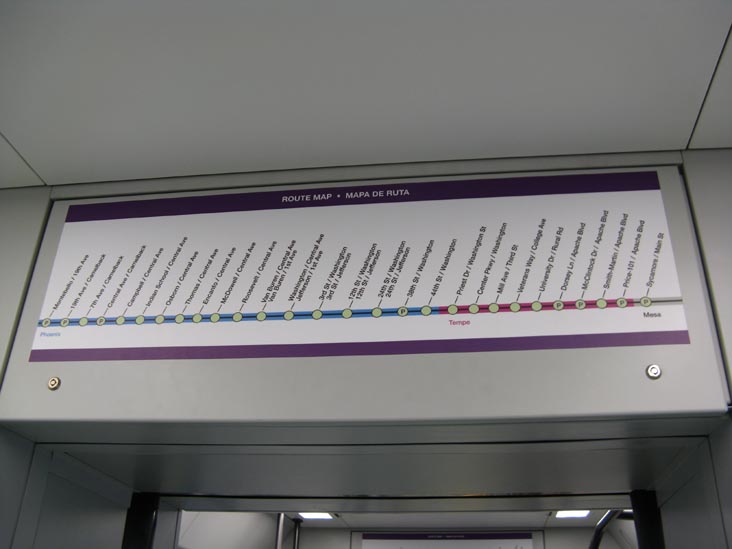
Arizona continues to study and develop future rail in Arizona. The light rail system in Maricopa County started operating in 2008 and the Modern Street Car in Tucson was set to open in 2014.

The Passenger Rail Study between Tucson and Phoenix was looking to connect the two largest metropolitan areas in Arizona and provide intercity/commuter rail transit.
#Light rail route phoenix az how to
Moving forward, the public and policymakers will decide how to generate the funding to pay for the project. There is currently no construction schedule and no funding identified for a project to build a rail system between Tucson and Phoenix. The decision to pursue the alternatives in the Draft Tier 1 EIS came not only from technical evaluations, but was also largely based on public and agency input. The EIS documented the environmental considerations related to the final two “build” alternatives and the “no-build” alternative. To support this effort, a Tier 1 Draft Environmental Impact Statement (EIS) was published in September 2015. During the five-year study, ADOT worked closely with the Federal Railroad Administration (FRA) and other federal agencies, as well as local governments and planning organizations in Maricopa, Pinal and Pima counties, to determine the feasibility of a passenger rail system between Tucson and Phoenix. See our Phoenix light rail map page for more information and for fun things to do along the line.Completed 2015 - The Passenger Rail Corridor Study began in 2011. Light rail park and ride information can also be found on their web site. We are NOT associated with Metro or Valley Metro Light rail. View Phoenix Light Rail Park and Ride locations in a larger map
#Light rail route phoenix az free
These Park and Ride lots are free of charge. Price Freeway/Apache Boulevard – 693 spacesĩ. The first 20 miles of metro Phoenix light rail opened Dec. McClintock Road/Apache Boulevard – 300 covered spaces, inside Grigio Metro parking garageĨ. Dorsey Lane/Apache Boulevard – 190 spacesħ. 38th Street/Washington Street – 189 spacesĦ. That’s where the Valley’s first elevated light rail station will be built. Phoenix In 2015, Phoenix voters approved a 31.5 billion transportation plan, which extended and increased a transit tax passed in 2000 to 0.7 percent.

The 1.6-mile extension will add tracks west along Dunlap, north on 25th Avenue, across I-17 at Mountain View Road and end near Metrocenter. Transit Ridership by Corridor over a 3 year time span in Phoenix is shown on 2d. Phoenix’s light rail line currently ends at 19th and Dunlap avenues. In addition, the application shows light rail station and bus stop. After October 2022, some retail stores will not support classic cards, and you may need a replacement if you reload your card at those stores. What you need to know: If you have a Classic ORCA card, you can keep using the card you have. All vending machines will now sell both the classic and new version of the adult ORCA card. Central Avenue/Camelback Road – 135 spaces, 90 are shadedĥ. The project includes building a bridge over Interstate 17. Several Routes, 1 Line, N Line, S Line & T Line. 7th Avenue/Camelback Road – 123 spaces, 77 are shadedĤ.

19th Avenue/Camelback Road – 410 spaces, 287 are shadedģ. To provide comments, you may contact Heidi Yaqub, ADOT Freight Planner by email or phone 602.712.7644, or subscribe to receive project updates by email.

19th Avenue/Montebello Avenue – 794 spacesĢ. Profiling the state’s railroad assets and traffic, along with identifying markets, logistics, and economic and demographic trends that will have an impact on rail transportation needs. There are currently nine park and ride lots located along the 20 mile light rail route. WSP USA served as the general engineering consultant (GEC) for Valley Metro Rails original 20-mile, 28-station Central Phoenix/East Valley Light Rail. Valley Metro Rail (styled as METRO) is a 28.2-mile (45 km) light rail line serving the cities of Phoenix, Tempe, and Mesa in Arizona, USA.


 0 kommentar(er)
0 kommentar(er)
